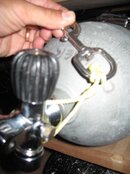Some of my favorite questions.....
1. Yes
2. No, single is fine, tanks depend on many factors
3. No, depends on type of boat, generally it's one of the benefits of SM
4. No real difference in bouyancy, stability is improved and weight placement is different
5. Tons of benefits.....freedom, stability, travel, movement, back issues........got a week?
6. Most agencies offer sidemount, here more than ever, choose your instructor first! A bad SM course is a horrible experience. There are a lot of newly certified SM instructors that shouldn't even be diving, research, research, research.
7. Main issues, spending too much time explaining SM to divers when you could be diving! Happens all the time. But, a good instructor or mentor is worth everything, mistakes can be frustrating at best, fatal at worst.
SM is just a tool in the tool box.......a really good one though.
1. Yes
2. No, single is fine, tanks depend on many factors
3. No, depends on type of boat, generally it's one of the benefits of SM
4. No real difference in bouyancy, stability is improved and weight placement is different
5. Tons of benefits.....freedom, stability, travel, movement, back issues........got a week?
6. Most agencies offer sidemount, here more than ever, choose your instructor first! A bad SM course is a horrible experience. There are a lot of newly certified SM instructors that shouldn't even be diving, research, research, research.
7. Main issues, spending too much time explaining SM to divers when you could be diving! Happens all the time. But, a good instructor or mentor is worth everything, mistakes can be frustrating at best, fatal at worst.
SM is just a tool in the tool box.......a really good one though.




